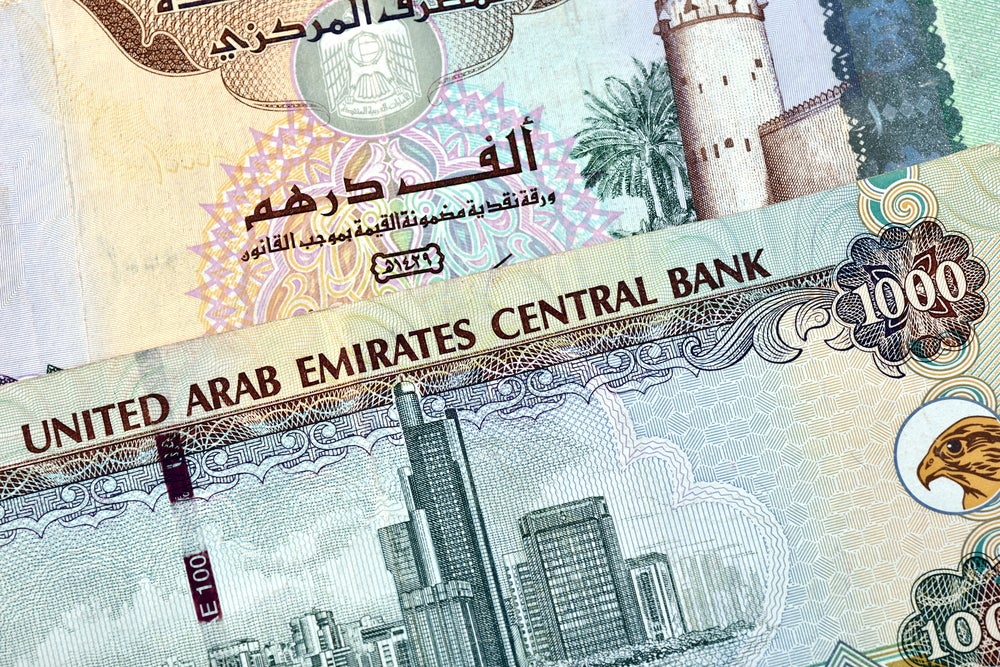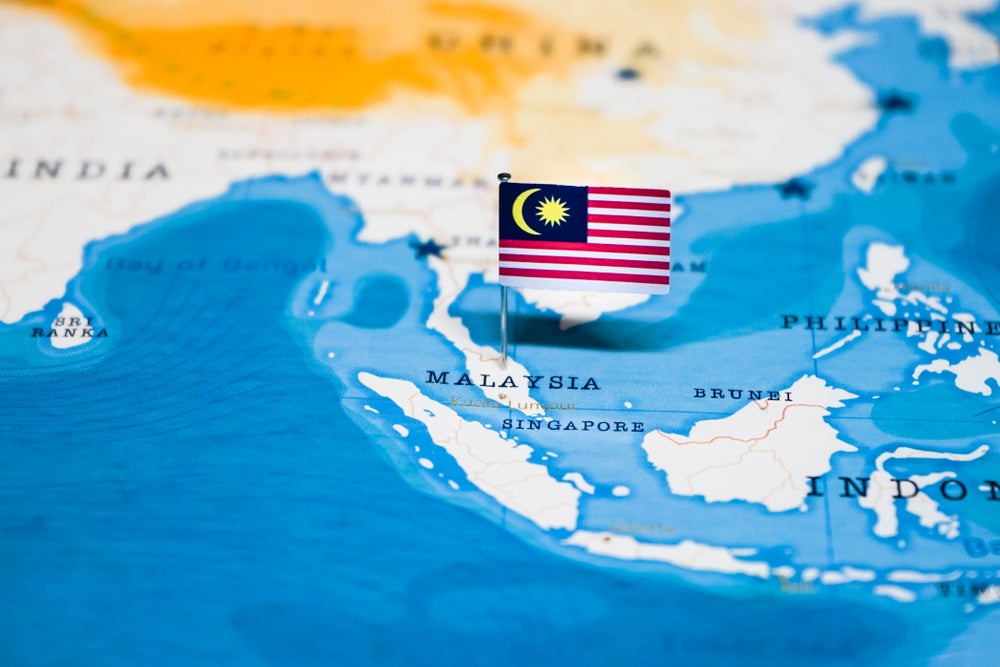
The UAE is arguably one of the
most advanced payment markets in the Middle East and is home to
many expatriate workers using all forms of electronic payments.
Recent efforts by regulators to migrate cash and other forms of
paper payments to electronic payments are having an effect, as
Victoria Conroy reports.
The United Arab Emirates (UAE) was
established in 1971 and is composed of seven emirates: Abu Dhabi,
Dubai, Sharjah, Ajman, Umm Al-Qiwain, Ras Al-Khaima and
Fujeirah.
Although the UAE is considered an
oil-rich gulf state, the emirate of Dubai has used the wealth
generated by oil to build an economy dependant on tourism and
construction, fed by an inflow of expatriate workers who have
flocked to the UAE over the last 15 years.
In July, the population of the UAE
was estimated to be 4.9m, but the local population of 1.5m is
dwarfed by the 3.4m expatriate migrant workers, attracted to the
region by high tax-free salaries.
How well do you really know your competitors?
Access the most comprehensive Company Profiles on the market, powered by GlobalData. Save hours of research. Gain competitive edge.

Thank you!
Your download email will arrive shortly
Not ready to buy yet? Download a free sample
We are confident about the unique quality of our Company Profiles. However, we want you to make the most beneficial decision for your business, so we offer a free sample that you can download by submitting the below form
By GlobalDataAccording to the CIA World
Factbook, 73.9% of the population in the 15-64 age group is
non-national, with a median age of 30.2 years, and per capita
income of $40,000 as of 2009, one of the highest rates in the
world.
Following the recent global
economic crisis, the UAE suffered a severe downturn in its economy,
leading to unprecedented job losses and a sharp fall in the value
of real estate in the region, which in turn trickled down to
consumer expenditure. However, according to the International
Monetary Fund, the UAE economy as a whole will grow by 2.4% in
2010, although Dubai itself is expected to see a growth rate of
just 0.5%.
The popularity of cash and
cards
 Cash is the
Cash is the
dominant payment method in the UAE, representing 80% of personal
consumption expenditure. Figures from the UAE central bank show
money supply, consisting of currency in circulation plus monetary
deposits, increased from AED208.1bn in 2008 ($56.6bn) to AED223.5bn
in 2009, a rise of 7.4%.
However, payment cards are enjoying
increasing popularity. In the past decade, card numbers and billed
volumes have grown by a compound annual growth rate [CAGR] of 40%,
and this growth has been driven by a rapidly expanding customer
base and high inflation.
According to statistics from the
UAE central bank, in 2005, there were 2.4m payment cards in
circulation. By 2009, this figure had grown to 8.4m, helped by the
migration from proprietary ATM cards to internationally
scheme-branded debit cards. The number of ATMs in the UAE reached
3,599 at the end of December 2009.
Growth in debit card numbers has
not yet turned into higher spending per card. Looking at debit card
spend at the POS compared with debit card cash withdrawal at the
ATM, almost 88% of debit card usage in the UAE is accounted for by
cash withdrawal compared to 12% spend at the POS.
However, there is a huge potential
for debit cards to move up the scale at the POS, helped by bank
promotion and increased consumer awareness of the benefits of
payment cards.
The global economic crisis has also
spurred usage of debit instead of credit cards. In August, it was
reported credit card spend in the second quarter of 2010 was 7 to
10% lower than in the year-ago period, whereas debit card spend
grew by between 12 and 15%.
Although a gradual behavioural
change was already underway in terms of UAE shoppers shifting to
debit cards from credit cards, the rapid use of debit cards in the
UAE has outpaced credit card growth.
In terms of growth in transaction
value, debit cards have outgrown credit cards by a large margin.
But in terms of the value of money spent at the POS, credit cards
still outpace the amount spent via debit cards, even though the
number of debit cardholders has already surpassed the number of
credit cardholders.
Currently, around 60 to 70% of the
total card transaction value belongs to credit cards while 30 to
40% is composed of debit cards in the UAE.
According to Visa’s quarterly
results ending 31 March 2010, its debit card payment transaction in
the UAE grew 8% compared to the same quarter last year and compared
to a 19.4% rise in the Gulf Cooperation Council (GCC) region.
On the other hand, debit card
transaction value grew by 9% in the UAE in the same quarter, while
the credit card user base in the GCC grew slower at 0.6%.
According to industry experts,
credit card holding per capita in the UAE between 2008 and 2009 was
the highest in the GCC region but this has dropped considerably as
credit card issuance has fallen in tandem with the growing
popularity of debit cards. The total number of cards (debit and
credit cards) has dropped by almost half between 2008 and 2009 in
the UAE.
In July 2010, Visa reported a
growth of 19.4% in the number of payment transactions across the
GCC in the first quarter of 2010. The increase in transaction
growth followed a successful year for Visa in terms of extending
its debit business in the region.
The payment solutions provider
formed a number of key debit partnerships with leading GCC-based
banks in 2009, which aimed to improve the card payment experience
for cardholders by providing increased debit card capabilities and
convenience.
 Visa’s
Visa’s
successful debit signings for 2009 included deals with ADIB,
Emirates NBD, HSBC and Dubai Islamic Bank. According to Visa, these
deals reflect increased consumer demand for debit products.
In relation to credit cards, the
demographic characteristics of the UAE have had a major impact on
the range of banking and payment services on offer. Because of the
high per capita GDP (estimated to be $40,000 in 2009), local banks
have had to get up to speed quickly on the features and benefits
that expat cardholders have come to expect as standard on their
payment cards, with a rich array of lifestyle benefits and services
attached.
Also, because of the UAE’s
reputation as a tourist destination, international travel to and
from the UAE is frequent, resulting in many credit cards offering
including travel benefits as a standard feature. Despite the recent
economic slump, the UAE credit card market is estimated to be one
of the most profitable in the Middle East and North Africa region,
driven largely by high levels of spend and roll-over balances.
In such a vastly competitive credit
card market, local and foreign card issuers have upped the bar in
terms of the features and benefits they offer on credit cards and
are also becoming increasingly creative and innovative when it
comes to marketing and promotional campaigns.
It is not uncommon in the UAE for
card issuers to run competitions giving cardholders the chance to
become instantmaires through prize draws, while those issuers with
travel-orientated propositions regularly give away air miles in
addition to the air miles accumulated through everyday credit card
spending.
At the same time, issuers are also
fine-tuning their pricing structures and value propositions to
appeal to targeted consumer segments. Segmentation among such a
wealthy cardholder base is a crucial element of acquisition and
retention strategies for UAE issuers.
It is often the case that standard
credit cards in the UAE have many of the features and benefits more
commonly found on gold or even platinum cards in Europe and the
US.
Payment and settlement
systems
The UAE central bank plays a
leading role in the establishment, development, operation and
oversight of payment systems in the UAE. The central bank owns and
operates the UAE’s main payment systems. UAE Funds Transfer System
(UAEFTS) is the central bank’ s real-time gross settlement system.
Membership of the scheme comprises 53 commercial banks, 21
government ministries, five money exchanges and two non-banking
financial institutions.
The system was developed in-house
and first went live in August 2001. Originally designed to replace
a manual tested telex process, in March 2009 the system was
enhanced to process batched files of low-value transactions. Every
business day the system processes up to 8,000 transactions worth
AED10bn.
The ICCS (Image Cheque Clearing
System) was introduced in July 2008 and features cheque truncation
and settlement taking place on the same day the cheque is cleared.
ICCS processes 97,000 items each day worth about AED3.8bn.
Launched in 1996, a UAESWITCH
scheme now comprises 45 member banks and over 3,200 ATMs. UAESWITCH
allows cardholders to obtain service at ATMs throughout the Middle
East Gulf region. Use of the network has grown over the years so
that monthly transaction volumes comprise over 1m balance enquiries
and 4m cash withdrawals worth AED6bn.
One notable implementation occurred
in September 2009, with the introduction of a Wages Protection
System in order to meet the objectives of the Ministry of Labour in
enabling the timely payment of employees’ wages. All banks and
money exchanges registered with central bank can act as agents to
this system.
In April 2009, the central bank
established the Payment Systems Oversight Unit to supervise payment
systems in general and to ensure their compliance with the core
principles for systemically important payment systems issued by the
Bank for International Settlements.
The year 2009 also saw expansion in
the number of bank branches in the UAE. While the number of
locally-incorporated banks remained unchanged at 24 during 2009,
the number of their branches increased to 674 in 2009 from 614 in
2008 and the number of their electronic/customer service units
increased to 26 from 19 respectively.
The number of branches of GCC banks
remained at 6 at the end of 2009. Whereas the number of foreign
banks remained unchanged at 22, their branches decreased from to 82
to 81 at the end of 2009 and the number of their
electronic/customer service units increased to 42 in 2009 from 35
in 2008.
The importance of
eGovernment
The communication infrastructure of
the UAE is a vital component in furthering the growth of its
economy and the adoption of electronic payments. According to the
CIA World Factbook, as of 2009, there were over 9.4m
mobile phones in use, ranking the UAE 65th in the world and just
under 3m internet users, ranking the UAE 60th in the world.
Perhaps the most important
development in the electronic payment space has been the
implementation of eGovernment, most notably in the Dubai
emirate.
An e-governance survey conducted in
2008 by the United Nations Department of Economic and Social
Affairs placed the UAE fifth in terms of e-government transactional
services, just behind developed countries such as Sweden, Denmark,
Norway and the US. The country also achieved 12th position in the
web measurement index which rated the online presence of national
websites and selected ministries including health, education,
welfare, labour and finance,
Figures published in August 2010
revealed the value of governmental electronic payments in Dubai
rose by over 60% in the first half of 2010 compared to the year-ago
period.
The ePay service allows both
corporate and individual customers to conduct e-payments for
government services via credit cards, e-AED and direct debit from
customer accounts in participating banks. Around $300m was
collected through ePay on behalf of the 22 Dubai government
departments that take part in the scheme. The system collected
835,000 transactions, a 17% rise on the number carried out in the
same period in 2009.
The number of direct debit
transactions grew from 13,000 in the first half of 2009 to over
23,000 in the first half of 2010. The top three departments in
terms of transactions were the Roads & Transport Authority, the
Dubai Electricity & Water Authority and Dubai Customs.
To further promote eGovernment, the
central bank and the Dubai eGovernment scheme signed a memorandum
of understanding (MoU) in October 2010, aimed at opening new
channels and providing more payment options for customers. The MoU
is in line with Dubai eGovernment’s ongoing effort to provide
government department customers with instant payment facilities of
government fees without having to waste time and effort visiting
banks or the concerned departments.
By connecting with the UAESWITCH,
Dubai eGovernment will allow corporate or individual customers to
settle government departments’ fees through Dubai eGovernment’s
ePay portal using ATM cards or through prepaid cards.
These payment options will be added
to the other options that are already available to customers. Dubai
eGovernment is keen on leveraging its cooperation with UAE Central
Bank to open new prospects for customers by expanding the number of
banks using the ePay gateway from four at present to all the 46
banks using the UAESWITCH.
The promotion of e-AED services is
also high on the agenda for regulators in the UAE. In February
2010, the Ministry of Finance and banking group NBAD launched the
second generation e-AED system, comprised of e-AED Visa-branded
‘Blue’ prepaid cards.
The Blue Card has six different
coloured card options under the name of ‘Al Haselah’ a word that
means collector in the local dialect. The new cards are expected to
raise public service standards, enhance efficiency, innovation and
usage of government services.
An e-services portal was launched
for the MoF in conjunction with the new electronic payment gateway
for the second generation e-AED cards. The e-services portal
launched the first service, linked to the electronic services
portals of the Ministries of Environment and Water and Public
Works, allowing payment to be made to the Ministry.
In the months to come, it is
expected national ID cards will also be used to make electronic
payments. According to the Emirates Identity Authority (EIDA), just
over 1.8m Emiratis and residents have registered for National ID
cards in the UAE so far.

The rise of
e-commerce
E-commerce is also expected to play
a vital role in bringing the UAE economy in step with the rest of
the world and is expected to account for more than $36bn in value
by the end of 2010.
Though the use of the internet in
UAE is rather high, large numbers of companies do their business
without using the internet. It is estimated by the Dubai Chamber of
Commerce that around 30% of companies in the UAE use e-commerce as
a way of conducting electronic payments, leaving enormous scope for
further penetration in this area.
A recent survey on online shopping
habits by MasterCard Worldwide revealed that in the fourth quarter
of 2009, the UAE had the highest average online shopping spend in
the Asia-Pacific, Middle East and Africa region, of $1,048,
compared to a slightly higher figure of $1,193 a year ago.
The survey has also showed that
online shoppers in the UAE made an average of four purchases in the
fourth quarter of 2009, compared to 4.2 purchases in the fourth
quarter of 2008.
Respondents in the UAE are becoming
more comfortable with shopping on the internet, with 52% of
respondents having stated that it is convenient to shop online in
2009, versus 47% in 2008.
In the UAE, the most popular items
bought by online shoppers included airline tickets (43%), books and
arts (34%), CDs, DVDs and VCDs (30%) and home appliances and
electronic products (29%).
Airline tickets (38%) and books and arts (33%) were the two
items that triggered the most impulsive shopping among UAE
shoppers. The top reason for impulsive buying was discounts (69%)
that online channels offer.








